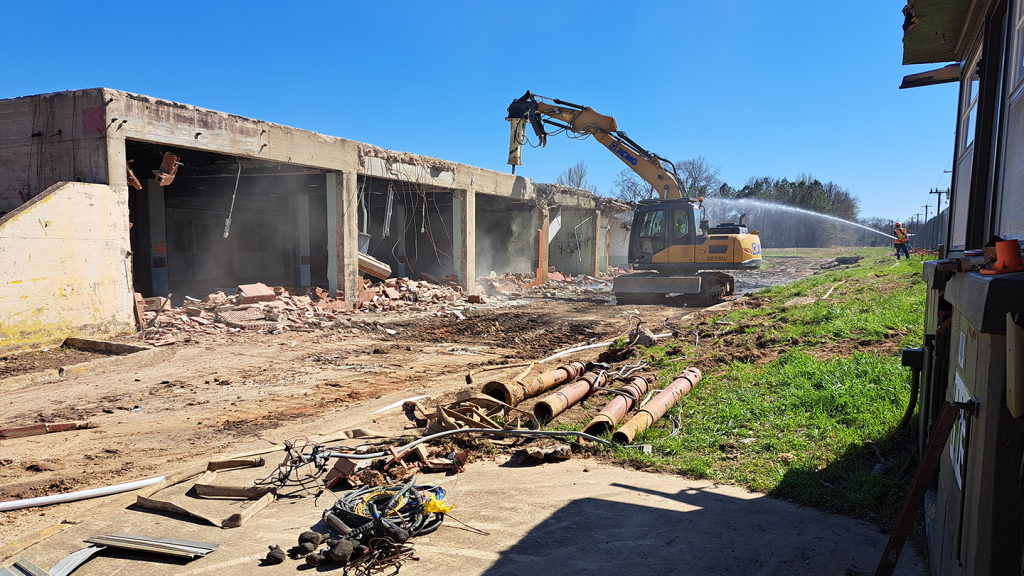Urban renewal is a dynamic and comprehensive process to revitalize and rejuvenate urban areas that have experienced decline, neglect, or blight. Also known as urban regeneration or redevelopment, this multifaceted approach involves strategic planning, redevelopment initiatives, and often removing or redeveloping outdated structures. The goal is to transform and uplift urban spaces, creating more livable, sustainable, and economically vibrant communities. Urban renewal is a dynamic process that breathes new life into aging cityscapes, fostering growth, innovation, and community vitality. At the heart of this transformative journey lies demolition’s often overlooked but crucial role. This blog will explore how demolition catalyzes urban renewal, shaping the landscape and paving the way for a vibrant and sustainable future.
Understanding Urban Renewal
Urban renewal is a comprehensive strategy to revitalize urban areas that have experienced decline or neglect. It involves strategic planning, redevelopment, and, often, removing obsolete structures to make way for modern, purposeful developments. Demolition plays a pivotal role in the initial stages of this process, creating a blank canvas upon which the vision of a renewed city can be painted.
Clearing the Path for Progress
In many urban environments, outdated and dilapidated structures are barriers to progress. These structures, once symbols of a bygone era, can impede economic development, deter investment, and compromise public safety. Demolition serves as the first step in clearing the path for progress, removing obstacles that hinder realizing a city’s full potential. It provides an opportunity to clean the slate and set the stage for innovative, forward-thinking projects.
Eliminating Blight and Enhancing Aesthetics
Derelict buildings and vacant lots can contribute to blight, diminishing the overall appeal of an urban area. Demolition is a powerful tool to eliminate blight, restoring the neighborhood’s sense of order and aesthetics. By removing eyesores and creating open spaces, demolition contributes to a more visually pleasing environment, boosting community pride and attracting new investments.
Creating Space for Modern Developments
As cities evolve, so do the needs of their residents. Demolition allows for the creating space that can be utilized for modern, purpose-driven developments. Whether it’s mixed-use buildings, green spaces, or innovative infrastructure projects, the cleared land becomes a canvas for architects and city planners to design environments that meet the changing demands of urban life.
Facilitating Infrastructure Upgrades
In many cases, urban renewal involves the modernization of infrastructure to meet the demands of a growing population. Demolition enables the removal of outdated structures that may impede infrastructure upgrades, such as new roads, bridges, or utility installations. This process not only enhances the functionality of the city but also improves connectivity and accessibility for residents.
Encouraging Economic Development
Vacant or underutilized properties can be a drain on local economies. Demolition opens up opportunities for economic development by clearing the way for new businesses, commercial spaces, and residential complexes. This, in turn, attracts investors, creates jobs, and stimulates economic growth within the community.
Fostering Sustainable Development
Demolition, when approached responsibly, contributes to sustainable urban development. Recycling materials from demolished structures reduces the environmental impact, and repurposing cleared land for green spaces enhances the city’s ecological footprint. By aligning demolition practices with sustainability goals, urban renewal becomes a force for positive change that respects the past and the future.
Balancing Preservation and Progress
While demolition is a crucial component of urban renewal, a delicate balance must be maintained between preservation and progress. Historic preservation efforts can coexist with strategic demolition, ensuring that a city’s rich architectural heritage is respected while making room for contemporary advancements. Community engagement and collaboration are key to navigating this balance successfully.
Conclusion
Demolition emerges as a silent yet formidable force in the intricate dance of urban renewal. It clears the way for progress, transforms blighted areas into beacons of vibrancy, and sets the stage for a city’s renaissance. As we embrace the transformative power of demolition, we recognize its role in shaping the urban landscapes of tomorrow—a testament to the resilience, adaptability, and boundless potential of our evolving cities. High Pressure LLC stands at the forefront of this transformative journey, committed to redefining urban spaces for a brighter, more sustainable future.

